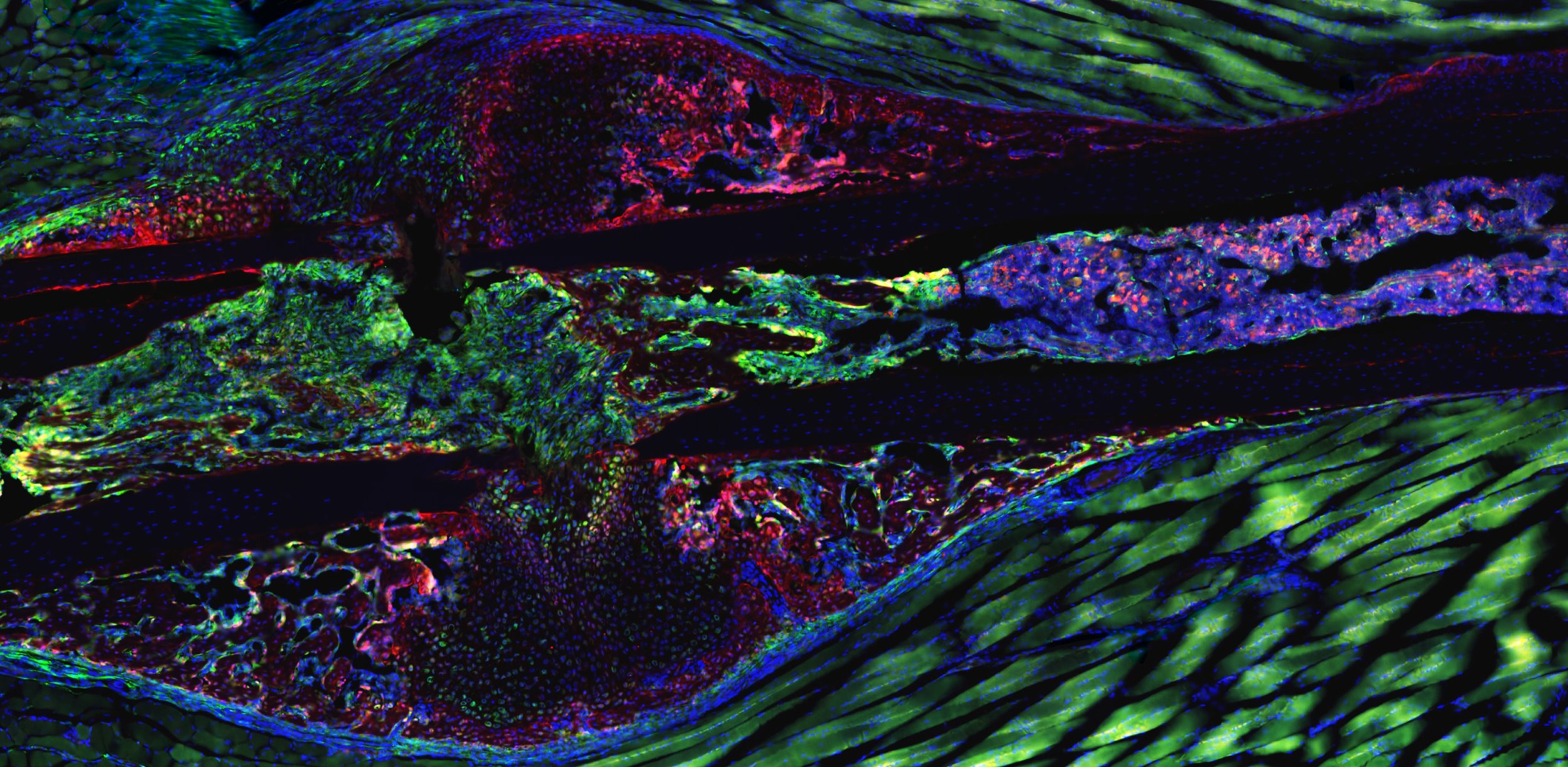
Skeleton
Hox genes initiate their expression in the limb just after limb bud emergence, becoming regionalized into patterning domains as the cartilage elements begin to condense. Unexpectedly, we found that regionalized Hox expression is maintained in the mesenchymal stroma and connective tissues throughout life. In 2016, we reported that Hox expression is only observed in subsets of progenitor-enriched (PDGFRa+/CD51+ and LepR lineage-labeled) bone marrow mesenchymal stromal/stem cells (MSCs), exhibiting ~3X higher progenitor activity in vitro than previously identified populations (Rux, et al., 2016). By generating a Hoxa11CreERT2 allele, we next demonstrated that Hox-expressing cells self-renew in vivo throughout life and serve as progenitors for all three bone mesenchymal lineages: cartilage, osteoblasts and fat (Pineault, et al., 2019), and that loss of Hox function leads to defects in differentiation throughout life (Song, et al., 2020). How Hox-expressing cells are activated and expand in response to injury, and how Hox genes function in this process are a focus of ongoing studies.



